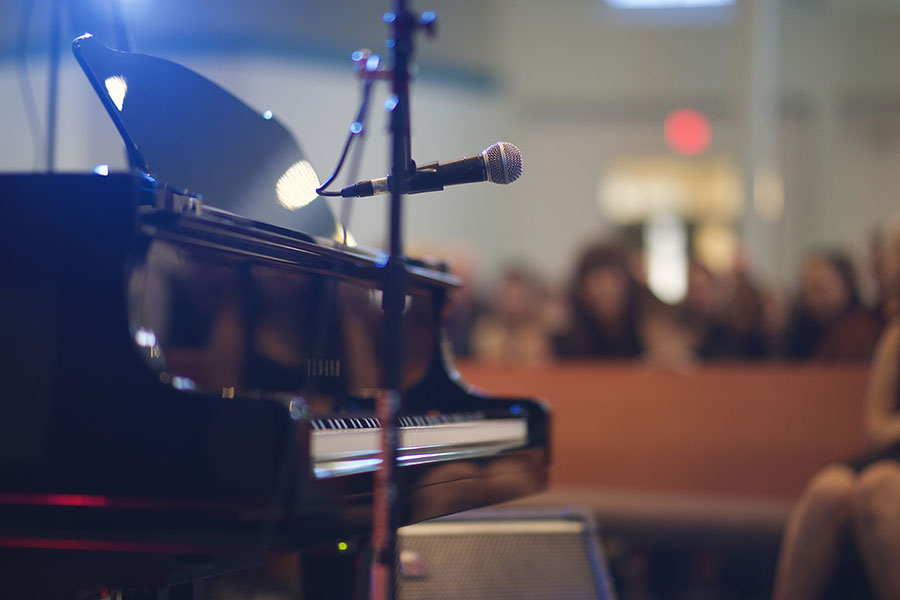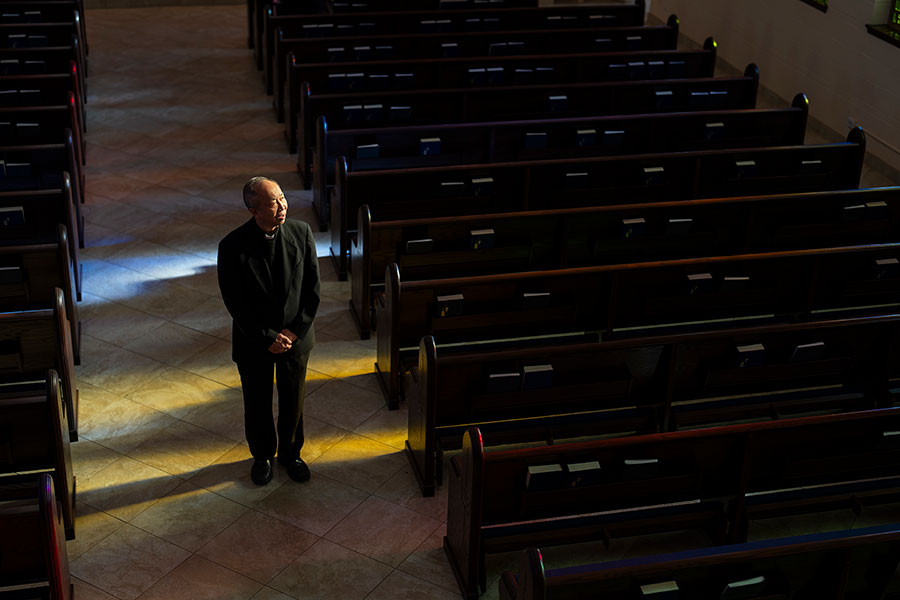A Joyful Noise

Music is not a nice “extra” at Mass — it is such an integral part of the celebration of the Mass that Father Thu Nguyen, pastor of St. Paul the Apostle Parish in Fort Worth and diocesan director of liturgy, will take two columns to address questions about music.
In this issue, Fr. Nguyen answers general questions about music’s place in the liturgy.
How does music contribute to the celebration of Mass?
Fr. Nguyen: Simply put, sacred music is sung prayer.
Sung expressions of faith within liturgical celebrations strengthen the bond of our faith with God and draw us into the divinely inspired voice of the Church as prayer. Sung prayer makes the liturgical prayers of the Christian community more alive and fervent.
When the celebrating priest in persona Christi greets or calls the assembly into the presence of God, the sung acclamations express our hearts and voices in a cohesive union at that gathering at various parts of the Mass.
Faith grows when it is well-expressed in celebration. Good celebrations can foster and nourish faith.
We see similar principles outside of Mass where songs enhance unity. For example, we sing at birthday celebrations to express our closeness and happiness, or we sing the alma mater to show loyalty to our school and fellow students. Singing bonds us together.
Is music necessary for the celebration of Mass?
Fr. Nguyen: According to the General Instruction of the Roman Missal, Christian faithful, when coming together as one in expectation of the Lord’s coming, are instructed by St. Paul to sing together psalms, hymns, and spiritual canticles (39). St. Paul emphasizes that singing is a sign of the heart’s joy.
This tradition of singing before God is rooted in Jewish traditions as described in the following passages:
Deu 31:19 — God said to Moses, “Teach it to the Israelites and have them recite it, so that this song may be a witness for me.”
Ex 15:1-18 — After they passed through the Red Sea, the chosen people sang as one to the Lord.
Jgs 4:4-5:31 — Deborah, a judge of Israel, sang to the Lord with Barak after God gave them victory.
II Sam 6:5 — King David and the Israelites made merry with all their might, singing with harps, tambourines, sistrums, and cymbals.
Mt 26:30 — Jesus and his disciples sang a hymn before their journey to the Mount of Olives.

What purpose does participating in singing serve?
Fr. Nguyen: Sacred music in the celebration of the Mass uplifts your heart and helps you enter the celebration on a more spiritual level.
Is singing sacred music similar to how beautiful sacred art or stained-glass windows can elevate your mind?
Fr. Nguyen: Yes, in fact, Pope St. Pius X said, “The musical tradition of the universal Church is a treasure of inestimable value, greater even than that of any other art.
The main reason for this preeminence is that, as sacred melody united to words, it forms a necessary or integral part of the solemn liturgy.”
Shortly after he became pope in 1903, Pius X proclaimed in his letter Tra le Sollicitudini that Gregorian chant and sacred polyphony were the official music of the Roman Catholic Church's liturgy.
Can you explain more about Gregorian chant and sacred polyphony?
Fr. Nguyen: Gregorian chant (otherwise known as plainchant) is the Church’s sacred music which developed as an intrinsic part of the liturgy of the Catholic Church.
It is unique among all types of music because it has always been used only for worship. Some refer to Gregorian chant as “sung prayer.” Purely melodic, it may be sung by one or several singers who all sing the same notes.
Unlike modern music, chanting has a free rhythm that is uniquely complementary to worship.
Gregorian refers to Pope St. Gregory I the Great (540-604), who played an important, if disputed, role in codifying which chants are sung during the liturgical year.
Polyphony is unaccompanied multi-voiced music that developed from chant. Unlike other forms of music often used in Masses these days, chant and polyphony do not carry associations with worldly things in the listeners’ minds.
Next issue, Fr. Nguyen will address more specific questions about sacred music.
For his previous columns on the Mass and the Roman Missal, go to: NorthTexasCatholic.org/understanding-the-mystery.
